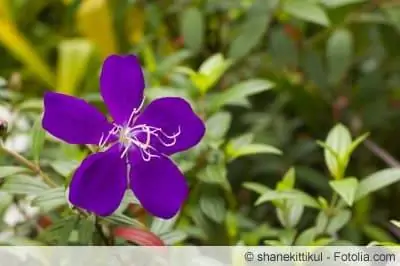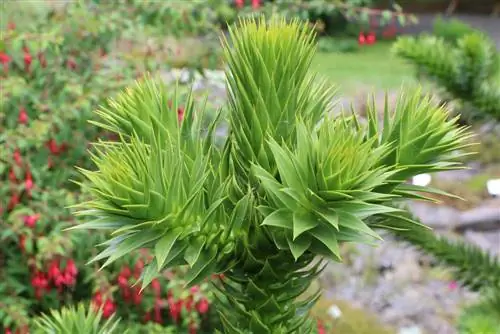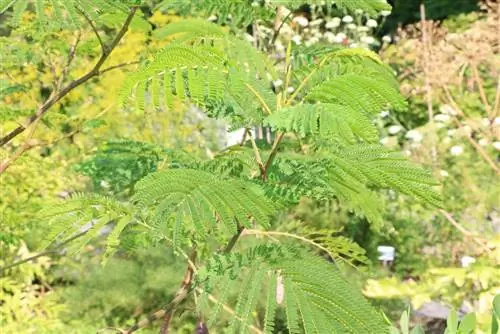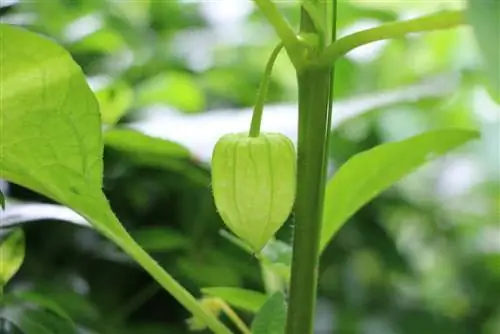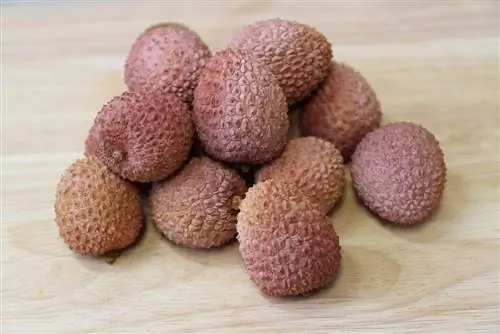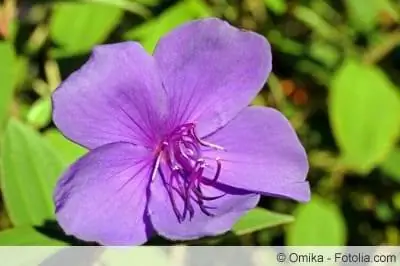- Author admin [email protected].
- Public 2023-12-17 03:39.
- Last modified 2025-01-24 12:45.
In order for the exotic Tibouchina urvilleana to develop a bushy silhouette and lush abundance of flowers, it requires repeated pruning. This produces plenty of plant material for easy propagation. Anyone who loves a challenge as a hobby gardener will also like to try breeding by sowing. You can read about both methods here. To ensure that the young plants you have grown yourself get through the cold season well in the first and subsequent years, these instructions also explain all the important aspects for successful wintering.
Propagation of cuttings
Since a Tibouchina urvilleana is very slow to branch out on its own, pruning it three times a year is one of the fundamental care measures. After each cut, you have a we alth of first-class material for propagation in your hands. This is especially true after the first cut in March. Follow these steps:
- The perfect cutting is 10-15 cm long and he althy
- The cut was made just below a bud
- In the lower half every offshoot is defoliated
- Small cultivation pots fill with peat sand or lean substrate
- Insert one cutting at a time so deep that at least 1 pair of leaves shows through
- Pour with lime-free water at room temperature
So that the cuttings quickly develop their own root system, a constant heat of 22-25 degrees Celsius is required. This is ensured by a heated indoor greenhouse in spring. Alternatively, place a plastic bag over each growing pot, which is supported with matches so that it does not touch the herbaceous parts of the plant. Placed on a warm, partially shaded windowsill, rooting will progress within the following 4-8 weeks. During this time, keep the substrate constantly moist and ventilate the cover every 1-2 days to prevent mold from forming. If a new offshoot sprouts, the plastic bag has done its job and is removed.
Tip:
If cuttings of a violet tree are watered from below, this method reduces the risk of rot and mold. To do this, place the pots in a bowl with a 5-10 centimeter high water level for a few minutes. If the substrate surface feels moist, the offshoots move back to their original place.
Repotting cuttings
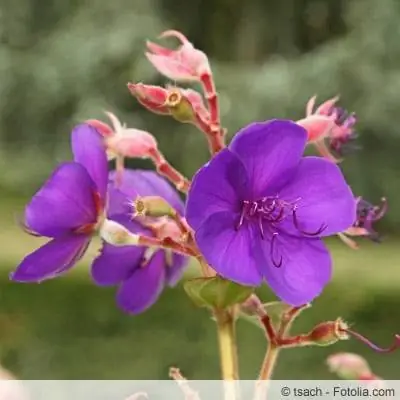
When the delicate roots grow out of the bottom opening of the growing container, it is time to move to a larger pot. A high-quality potted plant soil is now used as the substrate, which is made more permeable with the help of expanded clay, lava granules or polystyrene beads and a little sand. This is how you repot the young plants with expertise:
- The new pot is a maximum of 5 centimeters larger in diameter
- A potsherd above the floor opening prevents harmful waterlogging
- Fill the container halfway with substrate and make a depression in it
- Unpot the former cutting and plant it in the middle
- The fresh soil reaches almost to the bottom pair of leaves
Press the substrate a little with a spoon or stick so that a small pouring edge is created. Ideally, however, you should continue to water from below initially. Since the potted plant soil is pre-fertilized, the young plant receives its first portion of diluted liquid fertilizer after 4-6 weeks at the earliest.
Tip:
They promote lush branching if the shoots of a young princess flower are regularly trimmed.
Sowing
If the Tibouchina urvilleana spent the summer on the balcony or terrace, pollination by bees or bumblebees took place, which resulted in the growth of capsule fruits. These can be harvested to obtain seeds for propagation by sowing. This method cannot be expected to produce pure offspring. Just be surprised at which attributes of the parent and grandparent plants prevail. Alternatively, specialist retailers have certified seeds available. Although the seeds can be sown all year round, the ideal date is early spring from the end of February/beginning of March. From this point on, the lighting conditions are bright enough so that the young shoots do not rot. This is how breeding through seeds is successful:
- Fill a heatable seed tray with sowing soil, such as peat sand or coconut hum
- Spray the substrate with room temperature, lime-free water
- Sow the light germs on top and just press them down
- Cover with cling film or put in the greenhouse
At an ideal germination temperature of 22-25 degrees Celsius, the cotyledons break through the seed coat within 3-6 weeks. During this time, keep the substrate constantly moist. Any covering can be removed after germination. An extra-gentle watering method administers the water not from above but from below. To do this, fill a bowl approx. 5 centimeters high with water and place the cultivation pots in it. The capillary force then causes the moisture to rise into the substrate. After a few minutes, check the surface of the soil with your thumb. If it feels moist, take the seed container out of the water.
Prick out seedlings
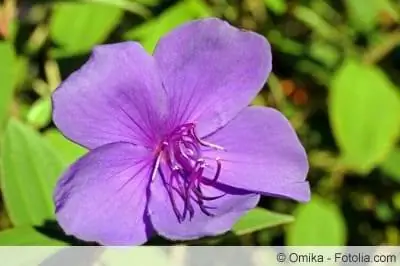
If the first pairs of true leaves grow above the cotyledons, the seed tray is very crowded. It's high time for separation, because leaves constantly touching each other trigger rot. This is how you skillfully prick out the young plants:
- Small pots half filled with potting soil
- Create a small depression in it with the pricking rod
- Use a spoon to lift out the seedling, including most of the soil
- Place in the hollow and fill with substrate up to the cotyledons
- Press the soil with the stick and water it
Root strands that are too long are cut off down to 2 centimeters with your fingers, otherwise they will bend in the substrate and die. Then place the young plants in a bright window spot at temperatures around 20 degrees Celsius. A regular supply of lime-free water is still mandatory. Your pupils will not be fertilized at first. Only after repotting into the final pot with substrate for adult plants does the regular supply of nutrients begin.
Overwintering in the right location
If the outside temperature falls below 10 degrees Celsius, it is too cold for the exotic Tibouchina urvilleana outdoors. Now she is moving to winter quarters that are like this:
- Bright and not too warm, with temperatures around 15 degrees Celsius
- A place by the south window or in the light-flooded, heated winter garden is ideal
- There is no active radiator in the immediate vicinity of the location
A short-term minimum temperature of 0 degrees does not kill the plant, but in the worst case it will be answered by the shedding of flowers and leaves. The same applies to a place in the room that is too dark. If a window seat for the princess flower is out of the question due to its height, it should be positioned under a special plant lamp.

Care in winter
The water and nutrient supply is tailored to the reduced metabolism during the cold season. Therefore, only water the princess flower when the substrate surface has dried. To do this, press your thumb into the soil. If the top 4-5 centimeters feel dry, water. Fertilizer is not given from December to March.
Since the dry heating air offers the spider mites ideal living conditions, the violet tree is repeatedly sprayed with lime-free water. This also aims to fill the coaster with water and pebbles. The evaporating water constantly coats the plant so that approaching spider mites do not even nest. Commercially available humidifiers, bowls filled with water and an indoor fountain also contribute to increased humidity, which is also good for human he alth.
Conclusion
If the cultivation of a Tibouchina urvilleana is successful, the desire for more specimens grows. For the ambitious hobby gardener, propagating this tropical flowering plant by hand is a matter of honor. Good to know that breeding can be done using cuttings as well as by sowing. There are some fundamental requirements that need to be taken into account, such as a sufficiently warm temperature of 22-25 degrees for both the rooting of cuttings and the germination of seeds. So that you can enjoy the princess flowers for many years to come, the wintering requirements must not be underestimated. The winter quarters should be bright and not too warm, with a reduced water supply and no fertilizer. If you keep cunning spider mites at a distance by regularly spraying with lime-free water, the violet tree will get through the cold season well.

